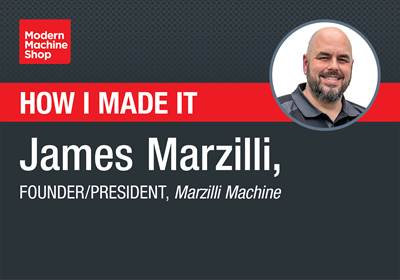How I Made It: Noah Decker, CEO of Decker Machine Works
Noah Decker grew up around his father's shop, where he picked up an experimental, DIY mindset for rehabbing and retrofitting old equipment that has helped Decker Machine Works thrive under his leadership.
Share




My dad started the company in 1982. I bought the business from him about two years ago, and I took over the business two years prior to that. I grew up in the shop since I was able to walk and talk. We started with old manual equipment and we just continued expanding with technology and capabilities.
I had a very wonderful mentor that I learned from and worked with in the shop for many years. He wouldn't throw anything out. He was cheaper than cheap. My old man and I might want to spend some money, and he was like, “No, no, no. We can fix this.” Oftentimes there was stuff that would be condemned to the scrap heap that we revived. You know, sometimes it was good enough just as a backup, and we might go out and buy or build something new, but at least we had a backup if something went down.

Noah Decker, second-generation CEO of Decker Machine Works. Image courtesy of Decker Machine Works.
I always try to rehab our equipment. I've just finished up an old Nikon microscope that had a very old 1980s DRO. That was very glitchy, and we just rebuilt the whole microscope at the end of the day. But now we've got 1080p display, three-axes with a Z-camera with a 4K camera on it. And this was just collecting dust. So breathing life into these things really comes into play.
If you want to have sustainable growth, you have to look at how you can rehab old things. How can you come up with solutions, so that way it's not getting thrown away, right? How can we produce things so that if it does have to be broken down or repaired in the future, it can be done right versus just thrown away?
I still have the old machine shop, which is an 1880s mill building. I've got a host of old manual machines in there — it’s a quasi-functioning museum. I preserve old history as much as possible to link with the new history, so that way you know there's always a connection back and forth to understand technology from where it was to where it is and to get insight into how things were done. And with new technologies, sometimes you have to think about it in a different process, or sometimes there's old technology that you can revitalize in a modern concept.
Every time we push the boundaries, we discover something new. It's this constant innovation day in and day out, and then as soon as you discover something, you're like, “Oh, cool. This works. Oh, I can use it over here too.” Sometimes you run into a snag where you might not have found the secret sauce yet on how to make it pay for itself or work. So you throw it on the back burner for a while and then you wheel it back out when you've got another problem and then it blows the doors off of however else you were going to do it. And you're like, “Oh, okay, this is where it shines.”
Read Next
How I Made It: Nushrat Ahmed: CNC Swiss Operator
By day, 21-year-old Nushrat Ahmed is a CNC Swiss operator making automotive parts. By night, she handcrafts crocheted items.
Read MoreThrough-Coolant System Cuts Nickel-Alloy Cycle Times by 70%
Decker Machine Works recently adopted Rego-Fix’s reCool through-coolant system for ER collets, reducing the cycle times on a nickel alloy job by 70%.
Read MoreHow I Made It: James Marzilli, Founder/President, Marzilli Machine
James Marzilli founded Marzilli Machine before the age of 30 on a dare from his wife Lee Anne, who now serves as CEO. As president, James has led the company to success by constantly refining his shop’s processes and seeking to learn.
Read More





















.jpg;maxWidth=300;quality=90)





